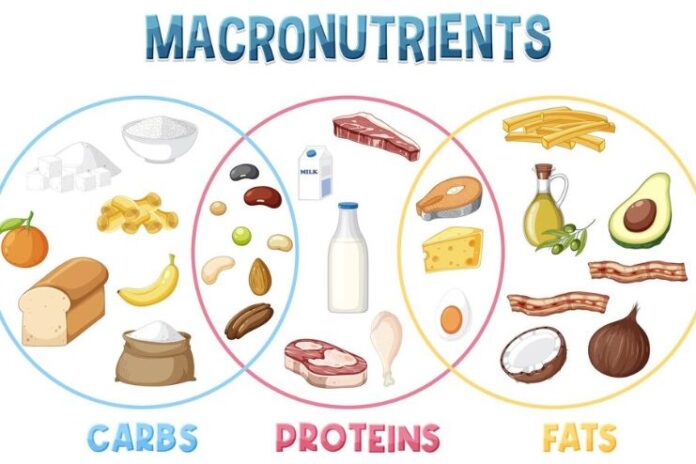Affiliate Disclaimer
Some links in this article are affiliate links. We may earn a small commission if you make a purchase through these links, at no extra cost to you. We only recommend products we find useful to our readersBalance in macronutrients is essential to fuel the body while losing fat in pursuing sustainable weight loss. Unlike fad diets that focus on extreme restriction, a balanced approach to macronutrients can help you maintain energy, support your metabolism, and reduce cravings.
This article will help you understand how to balance your macronutrient intake while offering realistic tips on losing weight for long-term health.
What Are Macronutrients?
Macronutrients, or “macros,” are nutrients your body requires in greater amounts to carry out essential functions and supply energy. The three primary categories of macronutrients are carbohydrates, proteins, and fats. These nutrients play a vital role in supporting bodily functions and ensuring structural health.
Each of the macronutrients can be found in different foods, and each of them has unique functions:
- Carbohydrates: These are found in grains, fruits, starchy vegetables, and legumes. They break down into simple sugars, which are called “glucose,” and supply energy for the body.
- Fiber: Fiber is a type of carbohydrate that your body cannot digest. It is found in plant-based foods like fruits, vegetables, whole grains, and legumes. Carbohydrates with high fiber content can help prevent hunger by slowing down digestion and regulating blood glucose levels and gut health.
- Proteins: Proteins come from meat, fish, eggs, beans, and nuts. They help repair muscles and produce hormones and cellular structure when broken into amino acids.
- Fats: Fats are needed to form cell membranes, hormones, and energy storage. Sources include avocados, oils, nuts, and fatty fish.
The two macronutrients, carbohydrates and protein, provide 4 calories per gram. Fats provide 9 calories of energy per gram. Therefore, these are critical in energy intake.
The ideal ratio of these macronutrients varies from person to person based on age, activity level, and health goals. Balancing the macronutrients will ensure your body is fueled appropriately to support its processes, especially when targeting specific health and fitness goals.
Understanding Carbohydrates and Their Impact
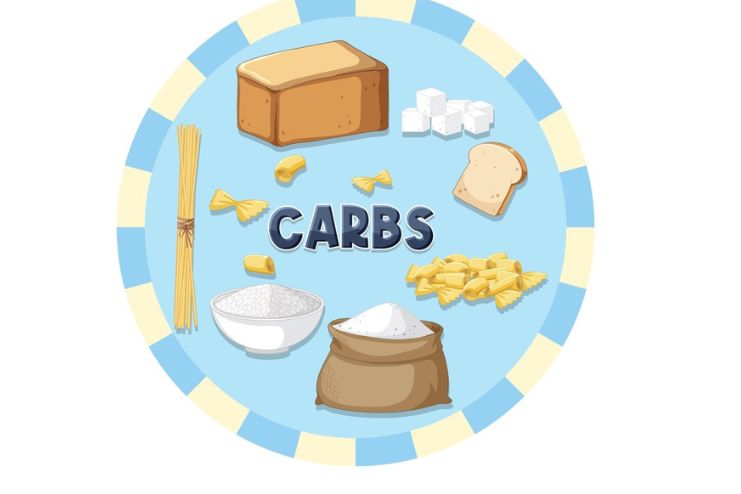
Excessive intake, especially of simple carbs, can lead to weight gain, increased blood sugar, and a higher risk of chronic conditions. Choosing whole, unprocessed sources of carbohydrates helps maximize their health benefits, providing energy and nutrients without negative side effects.
Fiber-rich carbohydrates help in weight loss by slowly releasing glucose into the blood, thus reducing hunger spikes and helping control calorie intake. Fiber-rich carbs like brown rice and sweet potatoes help you feel full, benefit digestive health, and lower cholesterol. So choosing fiber-rich foods can make a huge difference in weight management and general health.
Types of Carbohydrates
Carbohydrates are broadly classified into three types:
- Sugars
- Starches
- Fiber
Sugars, or simple carbohydrates, are found in foods like:
- Fruits
- Dairy
- Processed foods like sweets and sodas
Starches, or complex carbohydrates, include:
- Whole grains
- Legumes
- Vegetables
Fiber, also a complex carbohydrate, is found in plant-based foods and helps in digestion, regulating blood sugar and cholesterol levels.
Choosing the Right Form of Carbohydrates
When consumed, carbohydrates convert to glucose, impacting blood sugar levels. Simple carbohydrates, like those found in sweets and processed foods, tend to spike blood sugar quickly, leading to energy crashes and cravings. In contrast, complex carbohydrates release glucose more slowly, providing sustained energy and reducing fluctuations in blood sugar, making them ideal for balanced energy levels.
The Role of Protein in Weight Loss
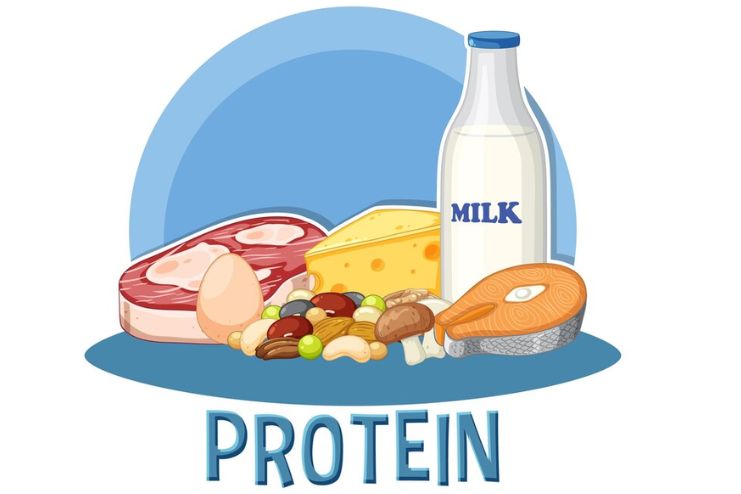
Protein is vital in supporting weight management and overall health. It works through multiple mechanisms that aid weight loss naturally. Higher protein intake changes hormone levels related to hunger, boosts metabolism by increasing the calories burned, and keeps you feeling full for longer, making it easier to eat fewer calories. Additionally, protein helps preserve muscle mass during weight loss, which supports a higher metabolic rate, further promoting fat loss.
An ideal protein intake is around 25-35% of daily calories or 0.7-1 gram per pound of body weight, which helps manage weight. Adding protein-rich foods such as lean meats, fish, eggs, dairy, and legumes and using a nutrition tracker can help maintain this intake.
Healthy Fats and Their Role in Metabolism

Healthy fats include avocados, nuts, seeds, and olive oil, which are key to healthy metabolism. These unsaturated fats are structurally helpful in cells, enable proper digestion of nutrients, and furnish a long-lasting source of energy without spiking blood sugar and causing a massive energy crash or making you overeat.
Additionally, healthy fats play a role in hormone regulation, an essential element of metabolic activities, and may even lead to the burning of unhealthy body fats. All healthy fats, taken in a balanced diet, help in effective metabolism and long-term weight management.
How to Calculate Your Macronutrient Ratio for Weight Loss
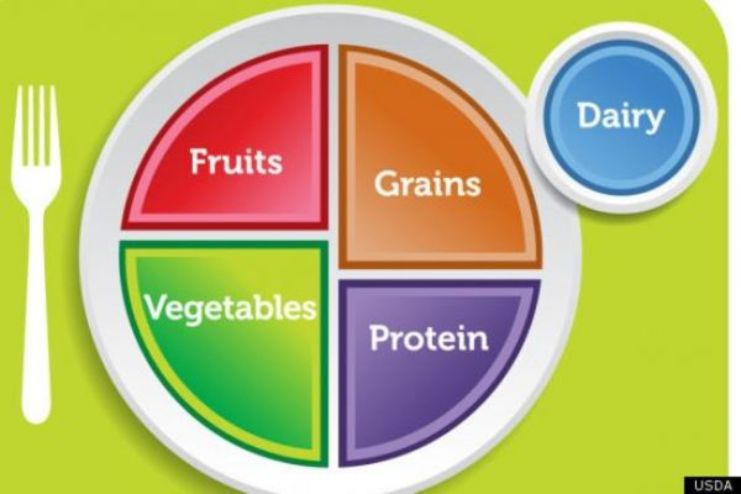
To find your macronutrient ratio, follow these guidelines to plan your carbohydrates, proteins, and fats intake based on your weight loss goals:
- Step – 1: Calculate Your Caloric Needs (TDEE): First, calculate your Total Daily Energy Expenditure (TDEE), which is the number of calories you require to maintain your weight according to your daily activity level. Online TDEE calculators can give you an estimate by including age, weight, height, and activity level.
- Step – 2: Set a Caloric Deficit: Use this TDEE calculation to reduce calories so you are in a daily calorie deficit for weight loss of about 500 calories daily. This kind of reduction would reduce a pound or so per week. Everyone requires some adaptation and adjustment, so listen to your cues.
- Step – 3: Distribute Your Calories To Macronutrients: You have now determined the calorie intake to support your healthy lifestyle and weight loss, so divide these calories between the three macros:
- Carbohydrates: 40-50% of the total calories.
- Protein: Proteins should be 25-35% of your calorie requirement.
- Fats: Healthy fats should comprise 20-30% of your daily calories.
- Step – 4: Convert Percentages to Grams: To convert percentages to grams for macronutrients, use these conversion factors:
- Carbohydrates and Protein: 4 calories per gram
- Fat: 9 calories per gram
- Example: Your daily calorie goal is 1500
- Carbohydrates:
- 40% of 1500 calories: 1500×0.4 = 600
- 1g carb gives 4 calories. Hence, 600/4=150g
- Protein:
- 30% of 1500 calories: 1500×0.3 = 450
- 1g protein gives 4 calories. Hence, 4500/4=112.5g
- Fat:
- 30% of 1500 calories: 1500×0.3 = 450
- 1g fat gives 9 calories. Hence, 450/9=50g
- Step – 5: Monitor and Tweak as Needed: Check your results regularly. Adjust the ratio of macronutrients according to your progress, energy levels, and comfort. Try calculators available online to calculate and track your macros.
Common Mistakes to Avoid
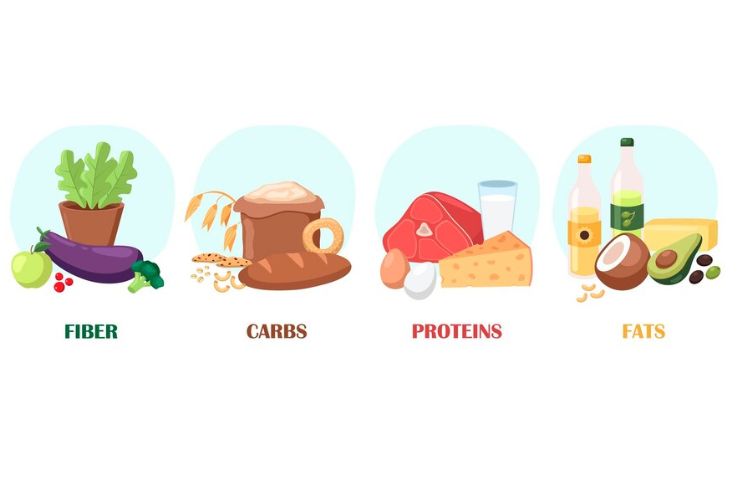
When working with macronutrients for weight loss, it’s easy to fall into common traps that can stall progress. Here are some frequent macronutrient mistakes and how to steer clear of them:
- Ignoring Total Calories: Focusing solely on macros without keeping an eye on overall calorie intake is a huge mistake. Even with the right macro balance, consuming too many calories will hinder weight loss. Always keep track of your total caloric needs alongside your macro distribution.
- Not Tracking Accurately: Inaccurate macronutrient tracking is a major pitfall. Eyeballing portion sizes or forgetting to log certain foods can lead to overconsumption. Use tools like food scales, measuring cups, and apps to track your intake consistently and accurately.
- Choosing Poor Quality Foods: Relying on low-nutrient foods to hit your macros can affect your weight loss journey. While technically fitting within macro targets, junk foods won’t support your energy levels, satiety, or overall health. Prioritize whole, nutrient-dense foods within each macro group.
- Overlooking Protein Needs: Many people don’t consume enough protein when trying to lose weight, which can lead to muscle loss and a slower metabolism. Ensure that protein makes up 25-35% of your daily intake to support muscle preservation and metabolism.
- Changing Ratios Too Often: Constantly adjusting your macro ratios without giving your body time to adapt can lead to inconsistent results. Stick with a chosen ratio for at least a few weeks before making any significant changes, and monitor your body’s response to adjust as needed.
- Neglecting Fiber Intake: Fiber plays a crucial role in digestion and satiety. Prioritizing fiber-rich foods, especially within your carbohydrate sources, can help you feel fuller longer and support digestion.
- Not Allowing for Flexibility: Being overly rigid with macros can make eating stressful and unsustainable. Allowing flexibility with your macro ratios can prevent burnout and make it easier to stick to your plan in the long term.
Conclusion
Master how to balance the macronutrients you consume every day to help your weight loss journey. Knowing what protein, carbohydrates, and fats do will help you plan and consume the right amounts, supporting fat burn, muscle maintenance, and energy build-up.
Losing weight is about consistency and maintaining a healthy and sustainable approach that works with your lifestyle. Avoid typical mistakes, favor nutrient-dense foods, and allow your body to acclimate to new changes. If you are patient and committed, tracking macros can easily become a habit and help you lose weight and improve general health.
References
- https://www.healthline.com/nutrition/what-are-macronutrients
- https://www.healthline.com/nutrition/how-protein-can-help-you-lose-weight
- https://www.webmd.com/diet/features/carbs-for-weight-loss
- https://www.medicalnewstoday.com/articles/321655
- https://www.allarahealth.com/blog/fats-and-hormones
- https://myhummusfit.com/blogs/news/calculating-weight-loss-macros
In this Article














